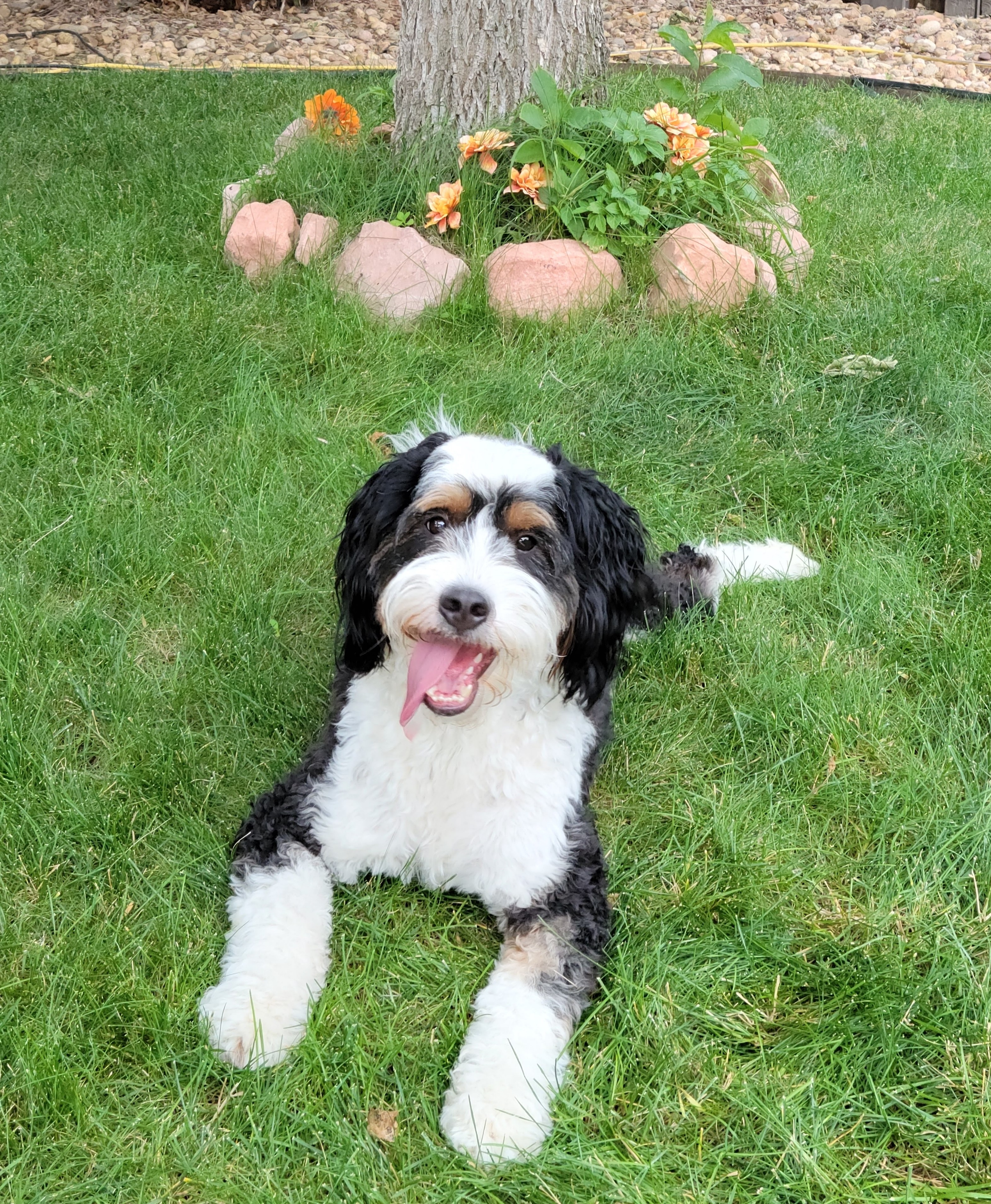
What exactly is a Bernedoodle?
Bernedoodles are a cross between a Bernese Mountain Dog, or Berner, and a Poodle. This hybrid cross combines the lovable steadfastness of the Berner and the goofy energetic intelligence of the Poodle.
Bernedoodles are the perfect choice for a low to non-shedding companion. Their favorite place is with their people… on walks, hikes, riding shotgun, or next to you on the couch for movie night.
Temperament and Personality Traits
- Energy – 3/5
- Trainability – 4/5
- Intelligence – 5/5
- People driven – 5/5
- Toy driven – 3/5
- Kid-friendly – 5/5
- Pet-friendly – 4/5
- Fearfulness – 3/5
- Dominance – 0/5
- Tendency to bark – 3/5
- Concept of personal space – 0/5 <– regardless of size, they will claim any available lap.
Compatibility
Bernedoodles are social butterflies, and need a higher amount of human interaction. If you do not have much time available for a dog, this is probably not the breed for you.
While having a low to non-shedding dog has its perks, these coats do require more time, energy and money spent at the groomer.
In some cases, Bernedoodles can inherit the bouncy energy of their poodle parent and the stubborness of their Berner parent. This means your Bernedoodle will need more consistent training and regular exercise for the first year or two. The extra time and patience required will absolutely be worth it in the end!
Some Bernedoodles can inherit the cautious or even skittish nature of a Berner parent when presented with new people or environments. These pups will thrive with positive reinforcement, a soft touch, and a bit of patience with their training.
Why a hybrid cross?
Most “pure bred” dogs are bred for a specific purpose, such as hunting/retrieving, service, portable size, or even the show ring. Bernedoodles were also bred for a specific purpose; to bring the best of two healthy breeds together, with all of their traits, but without the inherited genetic diseases common to either breed.
Poodles can be high energy, whereas Berners are more laid back. Berners have longer, wavy coats that can typically shed, whereas Poodle coats are hair instead of fur, ergo their coats grow rather than shed.
While I have the utmost respect for breeders who prefer to stay true to a single breed, there is risk for health issues, even for “pure breds”. These health risks can stem from breeding lines who carry genetic markers for diseases, crossing lines with underlying issues (such as blindness or aggression) unintentionally. Pure bred lines can be affected by the coefficient of inbreeding (COI), which is a measure of how closely related the parent dogs are to each other. The higher number the COI is, the closer the dog has been inbred. High COI percentages (over 20%) increase the probability of genetic defects being carried forward from ancestors on both sides, until a point where those defects now manifest as a genetic disease or visible defect in a dog. It can also present as an autoimmune disease or neurological disorder.
In some breeds, a COI of 12.5% is considered an acceptable range, in order to keep the consistency of certain traits like conformation and temperament, both necessary to achieve success at the show ring level. A 12.5% COI would be equivalent to breeding a half-brother to a half-sister, or a grandparent to a grandchild. This is a common practice in breeding, known as “line-breeding”.
Aside from health issues, poorly bred lines can result in dogs who are hyperactive, neurotic, and difficult to train. These are also typically the sorts of dogs who find themselves in a shelter, once the well-intentioned humans who brought them home have realized they cannot handle a dog with behavior problems. The buyer may or may not have done their research, or may have chosen a puppy based on color or cuteness, rather than health and temperament. Standards can be easily compromised when they are not that high to begin with, if a breeder is unaware, ill-equipped or unwilling to breed the right way for the right reasons.
Lifespan and Hybrid Vigor
The average lifespan of a Bernese Mountain Dog is 6 – 8 years. I have known a few who have seen their 10th birthday, but they are a rarity for the breed. Conversely, the average lifespan of a miniature poodle is 14 – 17 years. Our goal at Willow Tails is to breed only health tested parents with sound temperaments, and by using smaller poodles to sire our litters, we can elongate our Bernedoodles lives to a degree. At the end of the day, if we can provide families with a healthy, happy and well balanced Miniature Bernedoodle puppy, who may have added years to their life through our measures, then we will consider it a job well done. It is important to us and so like any responsible breeder, large investments have been made when choosing parents, ensuring the proper tests and health clearances have been done. Because of this, clients may pay more upfront for one of these puppies, but lower vet bills over the life of your Bernedoodle will offset that in the long run.
Bernedoodle Color Variations
Bernese Mountain Dogs typically have the traditional tri-color coat pattern, making them instantly recognizable. Poodles, however, have several colors and combinations in their genetics. The mixing of the stable Berner color traits with the poodle variations is where Bernedoodle colors get interesting. Each litter can have a few different color variations, making each litter unique… like a box of chocolates. You never know what you’re gonna get!
Color Patterns:
- Traditional Tri-color: similar markings to a Bernese Mountain dog, the main body color is black, marked with rusty brown on legs, eyebrows and under the tail. They may have a full white mask, chest, and “socks”, or they may also have very limited white.
- Parti Tri-color: parti is a term used in poodle color descriptions that means the coat is more than 50% white. Each puppy has markings that are unique to them, but can still have the rusty brown markings on cheeks, eyebrows, legs or underneath the tail.
- Phantom: similar to tri-color, but with less white and more rusty brown. Phantom pups can have very large abstract white markings, slight white accents, or no white at all.
- Sable (Traditional and Parti): these pups can come in a huge range of color variations. The static thing about sables is that they all “clear” as they reach adulthood, meaning their coats become lighter. They often lose the darker ends from everywhere but their ears. Puppies may be born with striking colors, and clear to a white or silver as adults.
- Chocolate (Phantom, Sable, Tri and Parti) – these pups have all the same color patterns as traditional tri-colors, but their base color is brown instead of black. We have not yet produced any chocolates.
- Red (Parti or Traditional): these pups can be mostly white with red ears, patches around the eyes, or markings on their body, or conversely red with white markings. Just depends on whether the red gene in the poodle is dominant in the breeding pair.
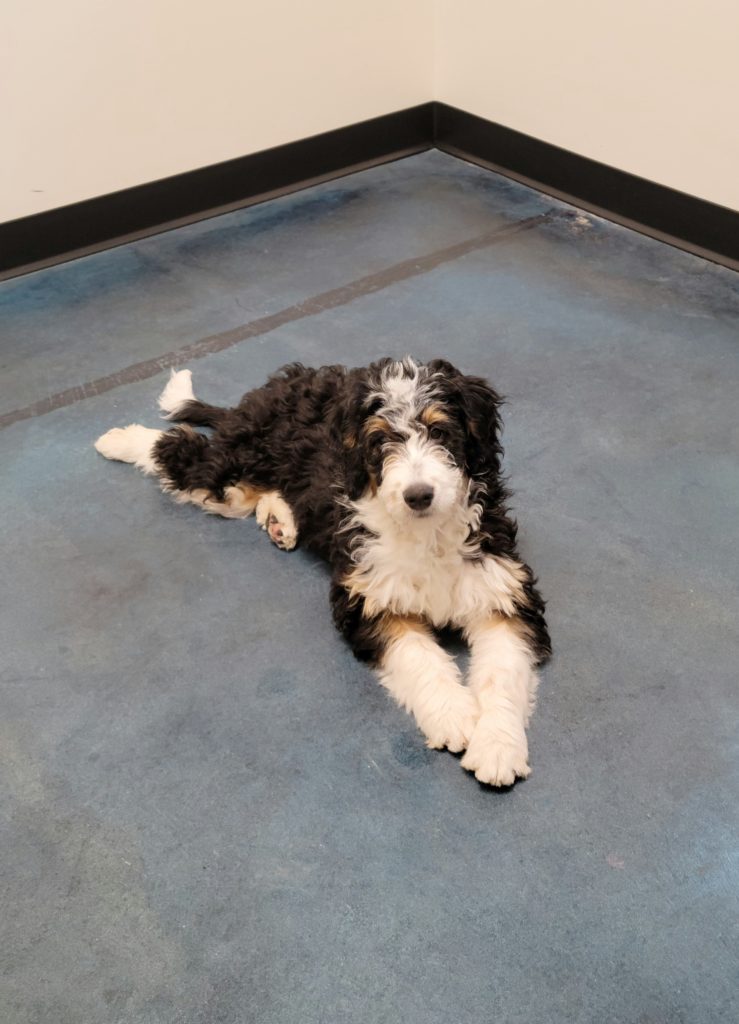
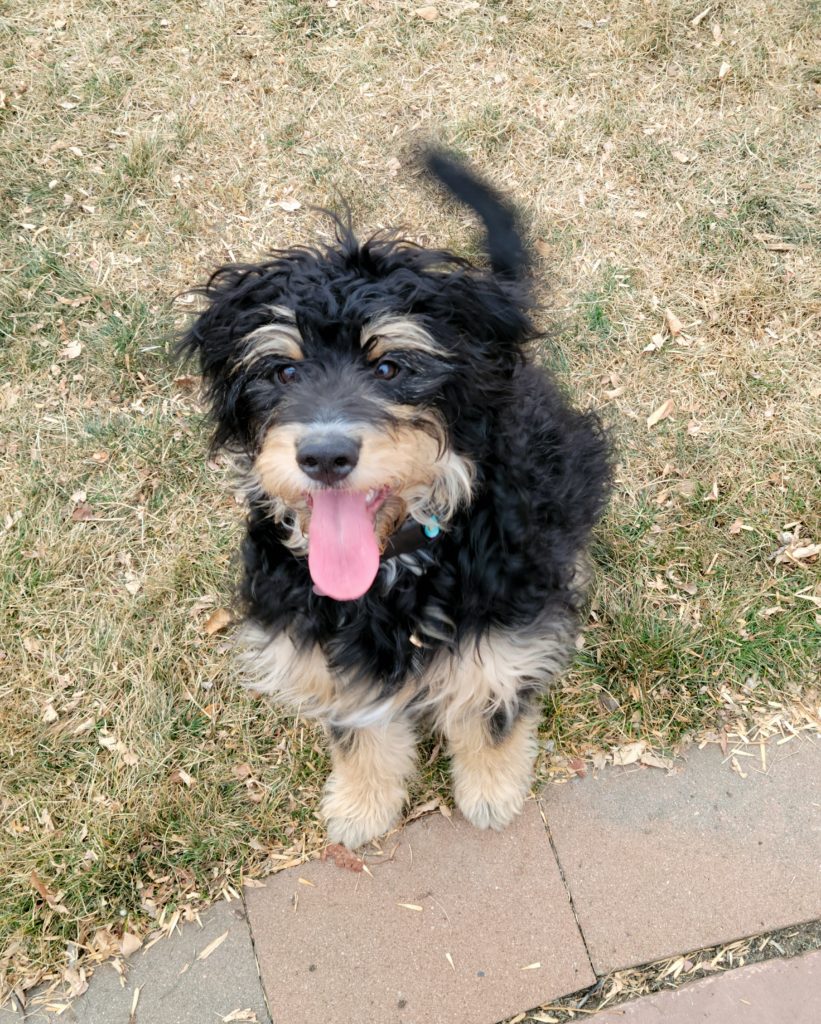
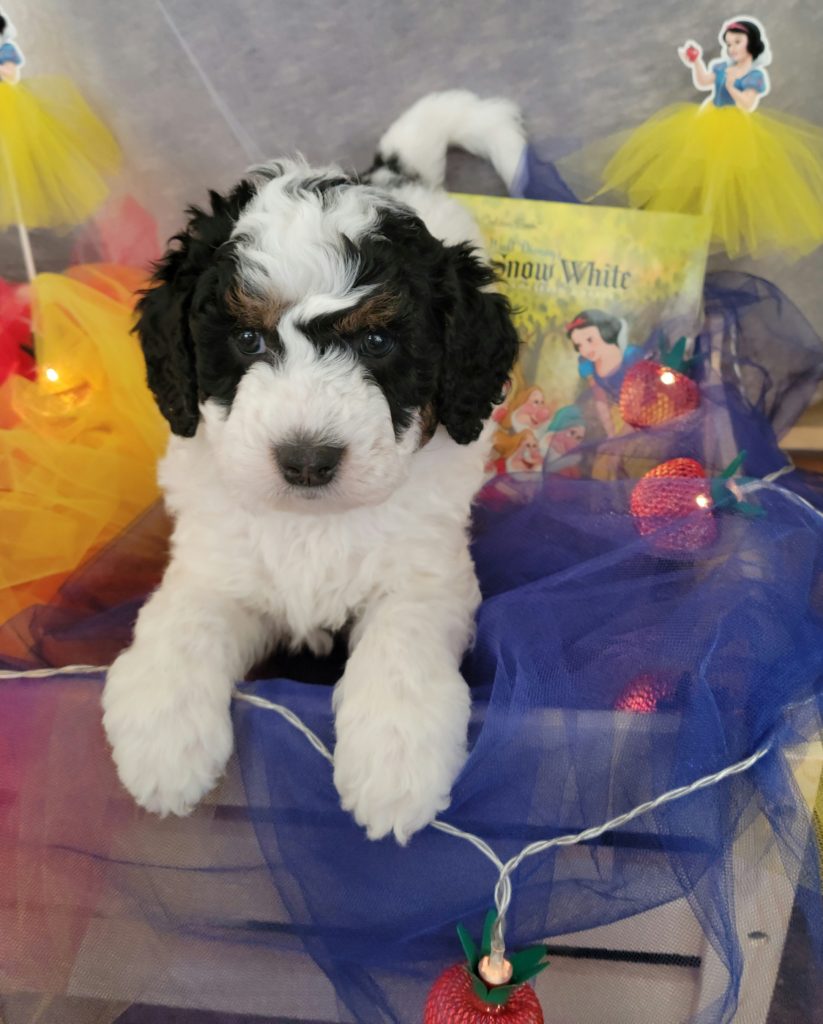
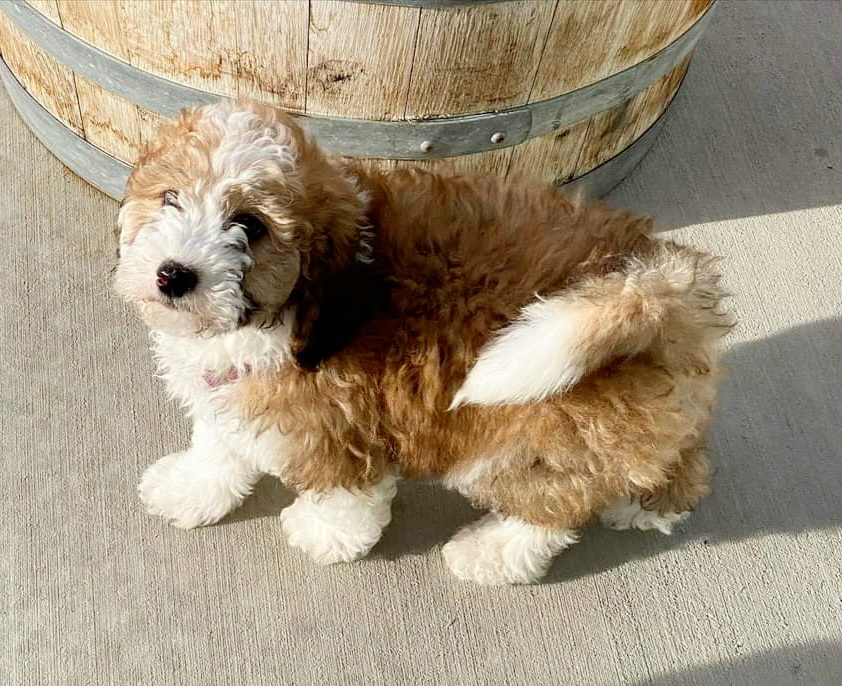
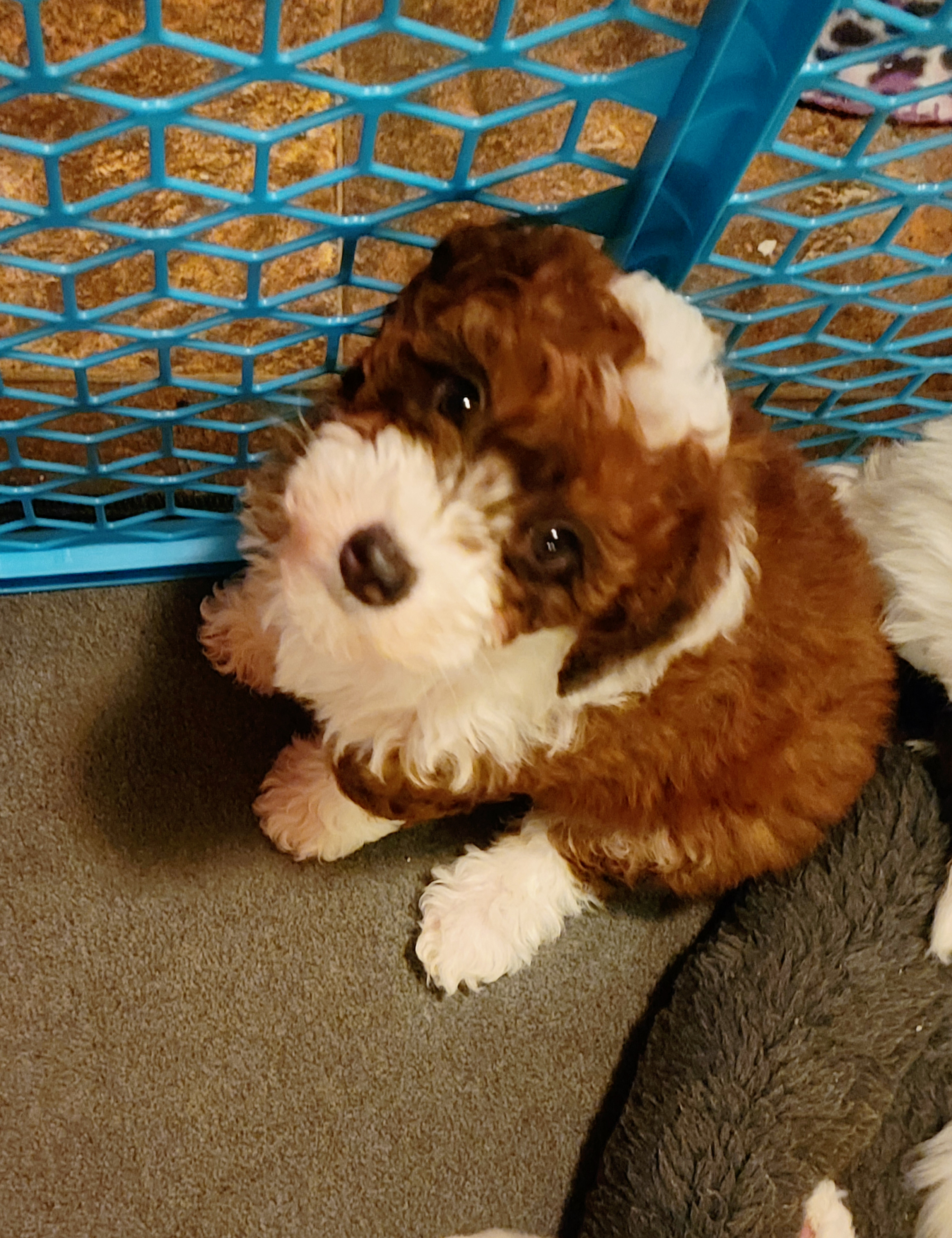
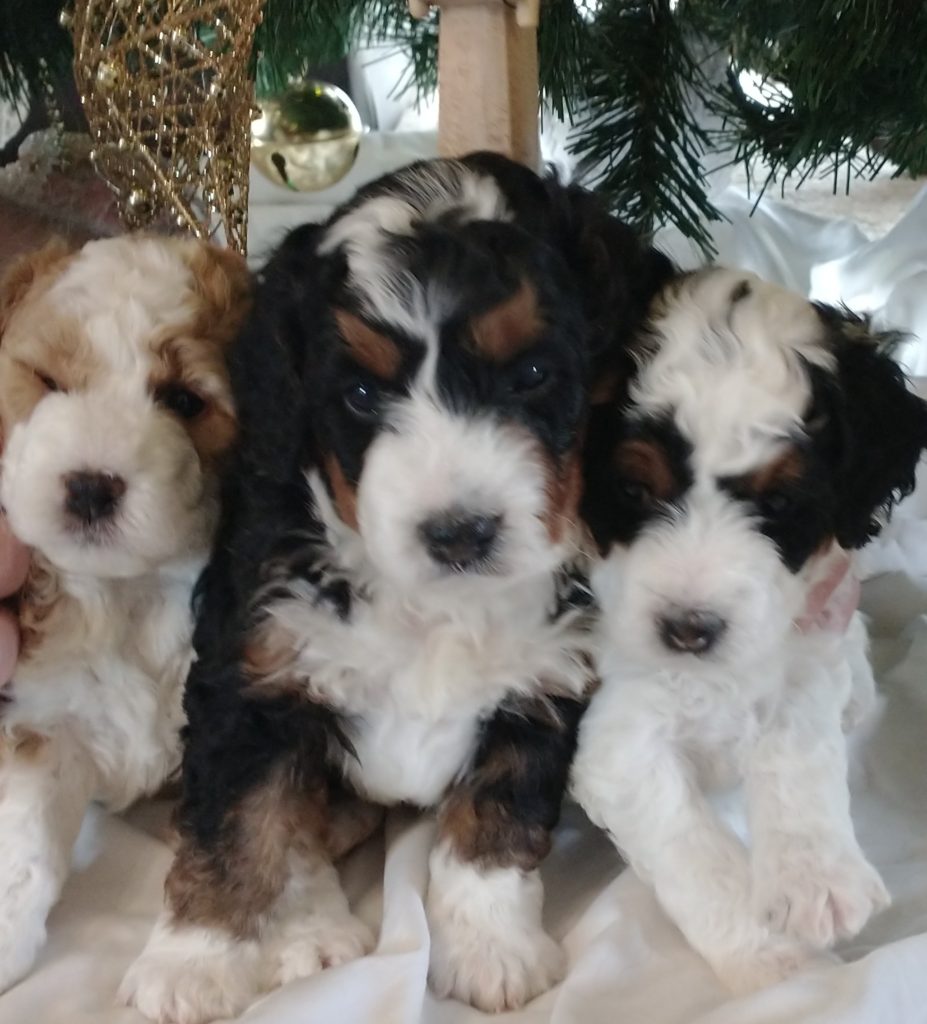
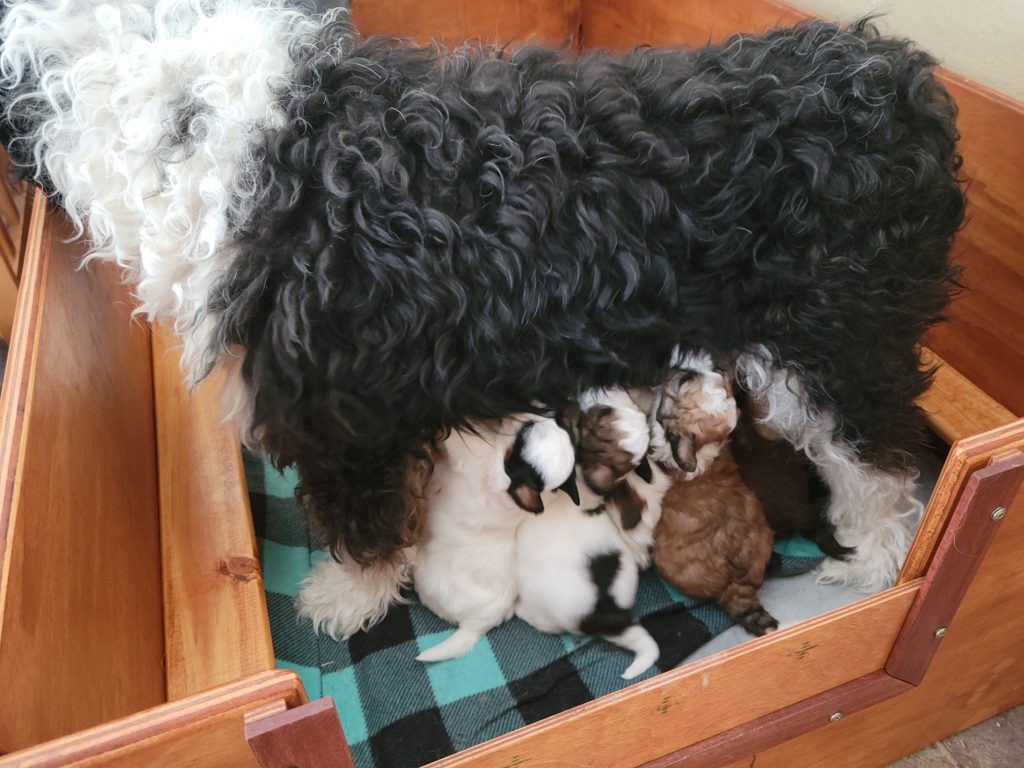
For more information on all things Bernedoodle, I would recommend a book written by Sherry Rupke of SwissRidge Kennels, who first pioneered this lovable hybrid!

